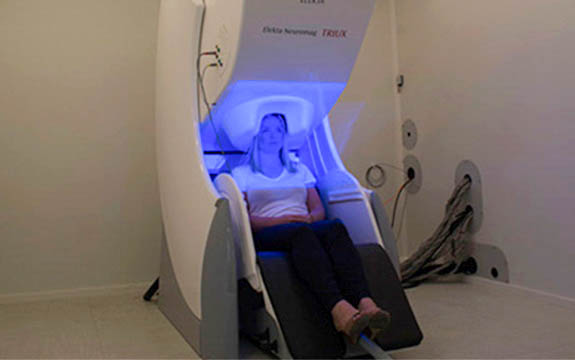Seeing epilepsy with surgical precision

In Summary
- This article featured in Swinburne’s new ‘Research Impact’ magazine, produced in association with Nature Publishing Group.
A project imaging the brains of people with severe epilepsy has changed the way a major Melbourne hospital manages the treatment of patients with the disorder.
The three-year collaboration between Swinburne University of Technology and St Vincent’s Hospital Melbourne (SVHM) used the university’s and magnetically-shielded chamber to conduct simultaneous MEG and electroencephalographic (EEG) recordings on patients with medically uncontrolled focal epilepsy.
The technique interprets brain function to pinpoint the suspected location of the `electrical storms’ that precede an epileptic event. This gives previously ineligible patients the option of epilepsy surgery involving removal of that part of the brain that triggers the seizures.
Instead of undergoing invasive surgery to locate the triggering nerve cells, the patient sits under a helmet-shaped sensor surface, which measures femto-tesla level brain magnetic activity — signals far fainter than even a household magnet. Both subject and equipment are shielded from the potential interference of ambient magnetic fields in a special chamber.
Once the abnormal tissue, which can trigger multiple seizures a week, is provisionally located, the surgical team at SVHM can investigate the option of excising it, leaving healthy brain tissue unaffected.
To date, 10 patients have been operated on using the MEG/EEG results.
“Each of these patients had suffered long-standing epilepsy, with seizures every week or so,” says Professor David Liley, one of the key project researchers, from Swinburne’s Brain and Psychological Sciences Research Centre.
“The surgery has greatly reduced the number of seizures the patients are experiencing, such that many of the patients are completely seizure free. It’s a major improvement in their quality of life. This means that they and their families have their lives back and are freed from the constant dangers and uncertainty of uncontrolled epilepsy,” Liley says.
No other surgical epilepsy service in the world uses the combination of high density EEG and MEG. The clinical results are so successful that SVHM, which has one of the largest adult surgical epilepsy programs in Australia, is now receiving referrals from other Australian hospitals, including The Royal Children’s Hospital and Austin in Melbourne, and from overseas.
Focal epilepsy affects about 60 per cent of all epilepsy sufferers. An estimated 5,000 new cases are diagnosed in Australia each year. The precision of the MEG/EEG technique offers a safe and powerful tool for diagnosis, and is redefining best practice for treatment.
MEG/EEG examinations are expected to become a rebatable item on the Australian Medical Benefit Schedule in the near future. The technique may also have applications in targeted radiotherapy or stem cell therapy

